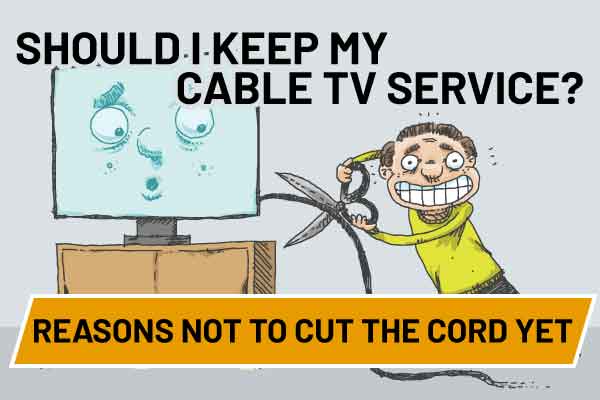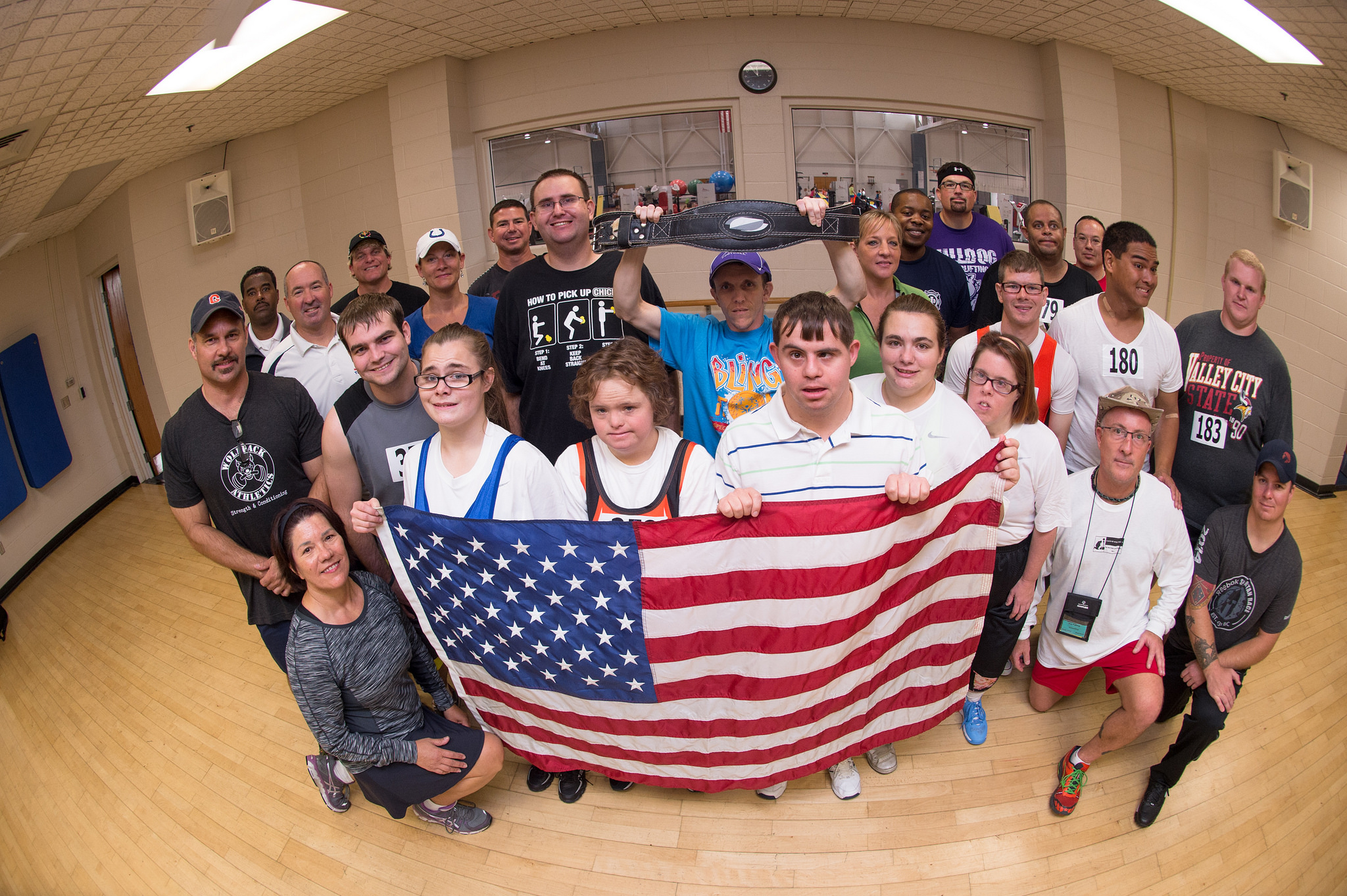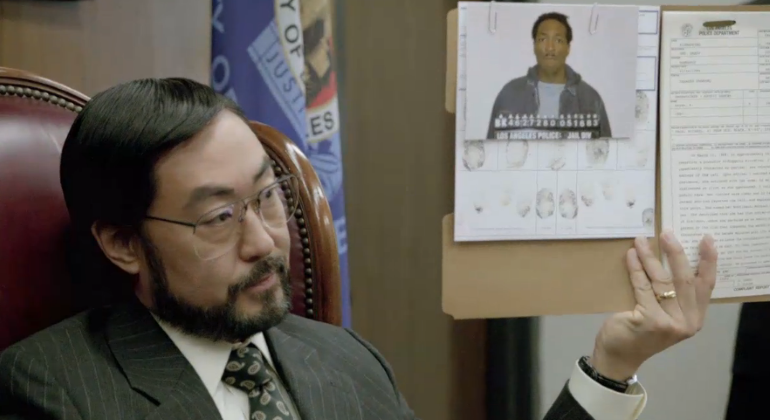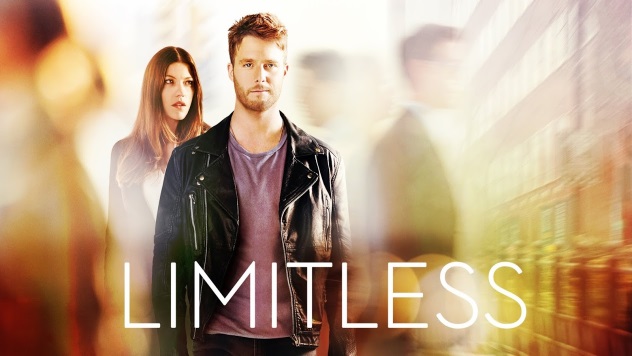The television industry is changing. Nearly every TV you buy nowadays is a smart device with hundreds of apps, special features, and WiFi connectivity. These TVs are geared towards cord-cutters, customers who have left their cable TV service behind for internet streaming.
But, what if you’ve had cable for years, and you’re not sure if you should take the plunge? What if you bundled Xfinity Cable TV with your internet and don’t know if you can unbundle? There are many reasons not to cut the cord just yet that we discuss in this article.
What is “Cutting the Cord”?
“Cutting the cord” is a term that is used when someone cancels their cable subscription in exchange for one or more streaming services. This typically happens when they decide that they’re paying too much for their cable subscription or not using it enough.
It’s no secret that stores like Target, Best Buy, and Walmart have stocked up on devices that turn your current television into a smart TV. Roku, Fire Stick, and others have only contributed to the growing number of subscribers who have canceled their cable.
The term “cutting the cord” comes from the fact that you turn your cable box and any other material devices back over to your cable company at the end of your contract and rely entirely on WiFi streaming for your entertainment needs.
Questions to Ask About Your Cable Service and Habits
If you’re wondering, “Should I keep my cable TV service?” and you haven’t come up with an answer, ask yourself the following questions.
What Do You Use Your Cable For?
Evaluate what you use your cable for. The main reason that people stick with their cable TV service is that they offer things that streaming services do not. This includes live sporting events, award shows, news reports, and instant releases of new episodes.
How Often Do You Use Your Cable?
For many people, sitting down in front of the TV is part of their daily routine. After dinner, they relax on the couch, watch their favorite shows, browse the news, or turn on a live sports game. If you couldn’t imagine going more than two days without being able to flip through channels or access your DVR, you should keep your cable service.
People who decide to cut the cord usually do so because they feel like they’re not using their cable enough. Why pay a bill for something you don’t use?
Are You Happy With Your Bill?
Everyone makes different amounts of money. For some households, cable’s average cost is too expensive, and switching over to streaming services is best for their budget.
This doesn’t apply to everyone, though. If you’re happy with your cable and it’s not taking a considerable chunk out of your wallet, why would you want to get rid of it?
Reasons to Keep Your Cable TV Service
1. No Relying on the Internet
We’ve all dealt with slow internet.
It always happens at the most inconvenient times, like when you’re trying to submit an assignment for school or getting ready for a webcam interview. Sometimes the internet is slow for no reason, but other times your internet slows down because too many people are using it. Perhaps someone is watching YouTube in one room, another person is playing games online with friends, and someone else is doing tons of research for a project.
Either way, the internet doesn’t like to work as hard when there’s an overabundance of devices connected.
Cable is separate from the internet, so you don’t have to worry about being in the middle of your favorite show and having to wait as it buffers. As long as you have a cable box purchased for each television, there won’t be any interference when everyone is watching TV, no matter how many people there are.
2. Best Collection of Channels
Sure, some streaming services like Hulu let you watch ABC news whenever you want with a basic subscription, but is that all you want access to? Even the best Sling TV subscription only gets you 53 channels. AT&T plans start at 65 channels, which is already more than any streaming service offers. DISH Network offers 190+ channels, but requires a satellite dish to be installed.
Many cable companies will also allow you to pick and choose which channels you want to have access to, reducing unnecessary costs.
Live Sports
Some cord cutters try to get sports fans to transfer over to the streaming service ESPN+ instead of enjoying their live sports through cable TV. ESPN+ can give you lots of access to sporting events, but it isn’t as great as it looks. Some of the content that ESPN+ does not have includes Monday Night Football or weekly NBA games.
The majority of ESPN+ content is games that were not popular enough to make it onto any of the live channels, so it isn’t a viable platform for dedicated sports fans who like to watch essential games as they happen.
3. Bundle Pricing
Cable provider prices aren’t set in stone. Since they’ve been struggling with the massive influx of cord-cutters, it’s easier to negotiate prices with them to reach an answer that you’re happy with.
Bundle packaging is a common commodity from cable and internet providers. The more services you receive from them, such as phone lines, internet, and cable, the less you’ll pay for the individual services. These prices can be even lower if you’re paying for premium services such as 5G internet, international phone plans, and so on.
4. Streaming Services Add Up
You decide to cut the cord, and you sign up for a popular streaming service like Netflix. You pay $12.99 a month for two people. Then, you see that Hulu is releasing a new show that looks interesting, so you sign up for Hulu, and you pay $11.99 in addition to your Netflix subscription. Then, you decide you want to rewatch the entire Star Wars saga, so you go and add Disney+ for $6.99 a month.
The truth is that there isn’t one singular streaming service that will give you everything you want.
You’re always going to want to watch something else that’s only available on another streaming service, which means you will have to pay for multiple streaming services. The monthly payments by themselves are small, but altogether you could end up paying more than you’re paying for your cable TV service.
5. On-Demand Has Improved
Cable companies have been trying their best to keep up with the vastly expanding streaming industry, and they’ve done a great job so far.
DirecTV has their own app where you can rent movies, stream shows on-demand, and watch your DVR recordings. It gives you similar flexibility to having a streaming service while also giving you cable television benefits.
Keep the Cable Box Plugged in
Don’t jump to cut the cord just yet.
If you enjoy your cable TV service and you don’t feel like it’s taking a chunk of your income every month, then there isn’t a reason to get rid of it. If you’re interested in adding some streaming platforms to your cable TV, some companies like AT&T have qualifying plans that include HBO Max and other programs for free.
Streaming companies are in a constant battle with each other. Shows are moved around at the end of a contract (like Friends moving from Netflix to HBO), and the available titles change frequently. Once you cut the cord and sign up for one streaming service, you’re bound to sign up for multiple, which means more monthly fees.
Plus, if you like watching live TV, cable is one of the only options that has everything, from sports games to award shows to news coverage.




